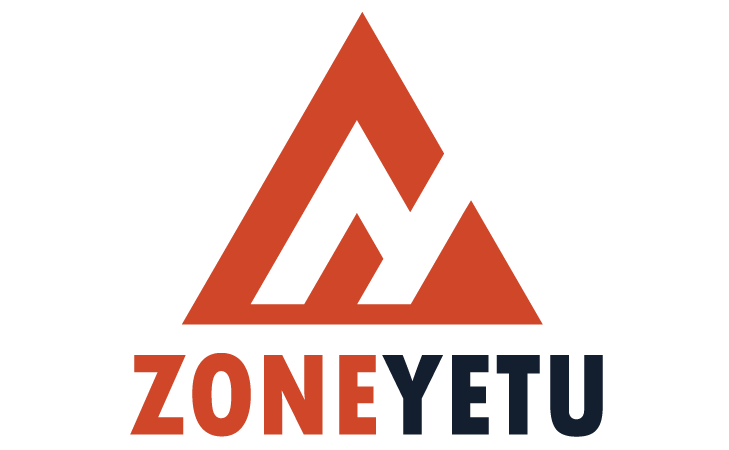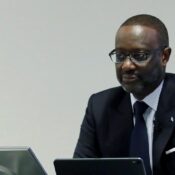
An ex-FDLR soldier discusses MONUSCO and FARDC assistance
According to “Maj” Gilbert Ndayambaje, 49, a member of the FDLR militia headquartered in the Democratic Republic of the Congo who was turned up to Rwandan authorities on March 1 by AFC/M23 rebels, he was coerced into joining the murderous militia in 1998.
The Rwandan government was occupied at the time with fighting infiltrators, also referred to as Abacengezi, after the genocide. Members of the army and youth militia of the overthrown homicidal dictatorship were resolved to infiltrate deep into Rwandan territory, continue killing citizens, create chaos, and regain power in order to complete their murderous plot. They were based in eastern Zaire, which is now the Democratic Republic of the Congo.
Along with other young men, Ndayambaje says he was forced to accompany militia members after he returned to Rwanda to register and take his final elementary school examinations at the Ecole de Sciences et Technique de Busogo in Musanze District.
He claimed that this occurred on the road that connects Nyange and Rwankuba.
In an interview with The New Times at the Rwanda Demobilization and Reintegration Commission (RDRC) camp in Mutobo, Musanze District, Ndayambaje stated, “They stated that they desired educated individuals whom they would train to become cadres.”
One of the FDLR militia members from the Democratic Republic of the Congo, Maj. Gilbert Ndayambaje, was turned over to Rwandan authorities by AFCM23 rebels.
The so-called Armée pour la libération du Rwanda (ALIR) then led the young people to Mount Nyiragongo, which is located in the eastern Democratic Republic of the Congo’s Virunga Mountains, where they received military training.
The ex-FAR, politicians, and Interahamwe militia members who had committed the genocide fled in large numbers, armed, to eastern DR Congo, then known as Zaire, as the Rwanda Patriotic Army seized control and put an end to the genocide against the Tutsi in July 1994.
Later, they united to form ALIR. They founded FDLR in 2000 to disassociate themselves from their heinous atrocities, shortly after the US government designated it as a terrorist organization for killing US tourists in Uganda’s Bwindi Forest.
We received intense ideological instruction against the new Rwandan administration and strong anti-Tutsi sentiment in addition to military training. They said that overthrowing the Rwandan government and taking control of the nation was their aim.
The 74th group of former soldiers, including Ndayambaje, are currently in Mutobo participating in a demobilization program that prepares them for reintegration into Rwandan society. They are permitted to return to the camp and see their relatives.
He described how he rose through the terrorist organization’s ranks, eventually becoming a platoon leader and training new members. He claimed that among their specific operations were the imposition and collection of [illegal] taxes as well as the theft of Congolese citizens’ agricultural products. The militia frequently slaughtered people and set houses on fire.
He claimed that the commanders of the genocidal militia received all confiscated goods and tax money, which frequently led to conflict among the other militia members.
Ndayambaje affirmed that “it is indeed true” that the FDLR carries out crimes against humanity, including the rape of women and children, the slaughter of defenseless civilians, and the enlistment of child soldiers.
In one instance, they murdered residents of the village of Busurungi in the Masisi Territory of the North Kivu Province.
This occurred during an operation against the FDLR by the Mai Mai militia and the Congolese army. In the village, the latter broke into people’s houses, burned them, raped women, and killed them.
Many people lost their lives during the period. There were more than 700 dwellings, though I can’t recall the precise number. Up until now, FDLR has operated in this manner; the only change is that it is now working with the Congolese army, or FARDC,” he stated.
“The extreme [genocide] ideology of the FDLR could never be overthrown.”
Ndayambaje also discussed the history of the genocidaires’ cooperation with Kinshasa, starting with the late president Laurent-Désiré Kabila’s close cooperation with the militia.
According to him, the cooperation with FDLR persisted when President Felix Tshisekedi took office since they were “working together in everything.”
In the FDLR and FARDC, soldiers of the same rank receive the same treatment.
“FDLR is essential to this conflict between DR Congo and M23, particularly because Congolese forces are prone to discouragement. When the fight gets hard, they drop their weapons and flee, allowing FDLR to assume command. They lack strength.
He claims that the cooperation between the FDLR and FARDC goes beyond the planning and carrying out of military actions to the sharing of items like uniforms, guns, and food.
Ndayambaje remembers how the Congolese army itself obstructed efforts in 2012 to locate and eliminate FDLR fighters in the Democratic Republic of the Congo in cooperation with Kinshasa.
MONUSCO and FARDC coordinated a military operation known as “Amani Kamilifu” (strengthening peace) against FDLR elements in the South Kivu Province’s Shabunda, Mwenga, Kalehe, and Kabare regions.
Ndayambaje, who was also in South Kivu, stated, “Colonel Jaguar of FARDC called Colonel Hamada Habimana, who was then FDLR’s division commander for South Kivu, and alerted him about the operation and warned him to flee from the region.” They took refuge in the jungle.
“After a while, we went back to the location because they (MONUSCO and FARDC) couldn’t find anyone there.”
MONUSCO in the spotlight
Ndayambaje claims that MONUSCO, the UN peacekeeping force in the Democratic Republic of the Congo, has been playing a two-sided game by supporting the FDLR over the years, even while it has been involved in operations aimed at finding them and forcing their repatriation to Rwanda.
Three white MONUSCO representatives, one of them was named Johnson, visited South Kivu in 2011 and had a conversation with a delegation led by Hamada.
I noticed a note and ammunition crates for each troop as soon as they departed.
He added that MONUSCO would frequently supply food items to FDLR. Ndayambaje claimed that whenever the Congolese government put pressure on it to leave the nation, “MONUSCO would desert us and then give the government weapons and support.” FDLR vanished back into the woods during that period, only to return to bring the mission back to life.
Anyone who tried to flee was slain by the FDLR.
Ndayambaje clarified that he always wanted to return to Rwanda because of the way the militia soldiers were handled by their superiors, who informed them they would be slaughtered as soon as they entered the nation.
He said he would have preferred “death in Rwanda” to carrying on with their way of life in the woods. He claimed that since 2010, he had been preparing to flee.
Ndayambaje responded that “FDLR killed anyone who attempted to escape or anyone whom they thought was planning to” when asked why he hadn’t crossed to Rwanda during the years he had been promoted through the ranks.
Ndayambaje claimed that he came up with a strategy to get to the Rwandan border from Sake, where he was, after learning that “Brig Gen” Gakwerere had been captured by AFC/M23 rebels after Goma was taken.
Ndayambaje claimed that because he didn’t know much about Goma, he went into a Congolese house and asked for instructions. He claimed that the house he had entered was welcoming.
After a few minutes, they returned with three M23 soldiers after going outdoors. He described what felt to him to be the close of one chapter in his life: “I had no other clothes, so I was still wearing my FARDC uniform.”
He was set to rejoin with his wife and five children, whom he had sent to Rwanda in 2012.
“My wife came to visit me after I got here (Mutobo), and I was also granted permission to visit my mother for three days,” he said.
According to Ndayambaje, he discovered that the nation was entirely different from what they had always been told.
We were warned that as soon as we stepped foot in Rwanda, we would be killed. However, we are being cared for here. We receive clothing and food. We are free to travel about.
All Categories
Recent Posts
Tags
+13162306000
zoneyetu@yahoo.com



